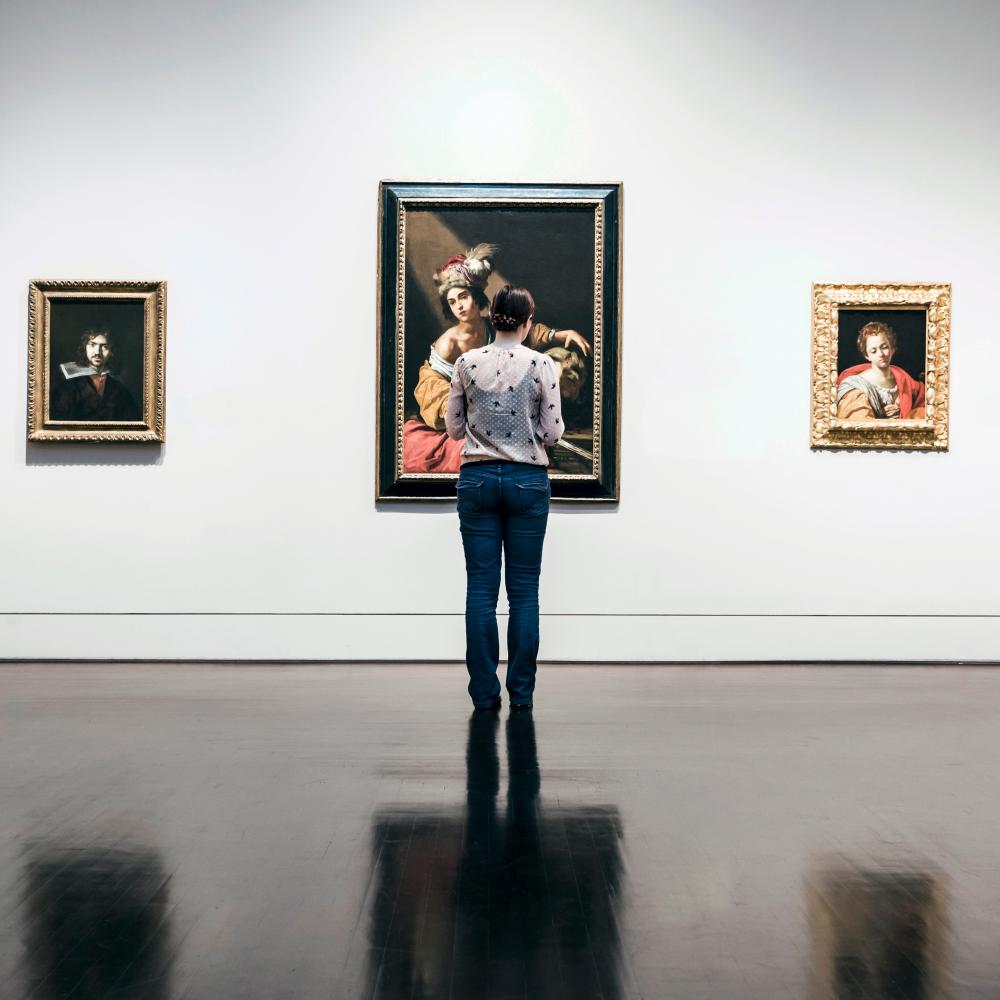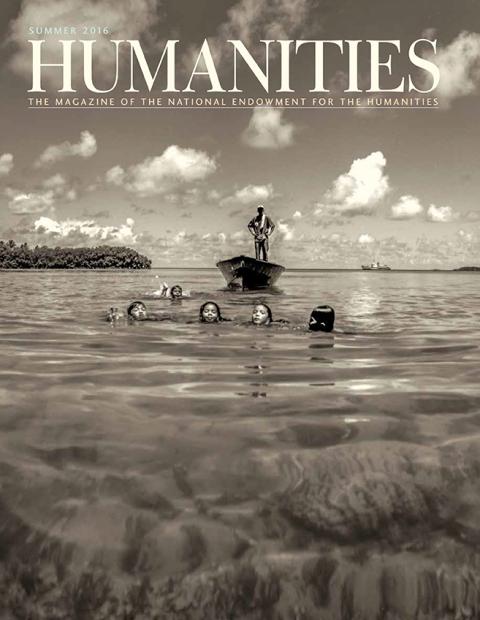On a school trip to Rome and Florence in the spring of 1972, I, along with a few hundred other high school students of Latin III and IV from south-central Pennsylvania, trudged through the Vatican, the Forum, the Uffizi, and one or two galleries that now escape my memory. Much of it passed before me in a blur, but I do remember the tip of my teacher’s shoe as it pointed to a place on a stone floor in the Forum. She was drawing our attention to a coin that in ancient times had melted on that very spot and become embedded in the rock. I dabbled in coin-collecting, and that perhaps explains why I remember the scene. I felt a bond to an artifact, and was fascinated by its transformation into a formless jewel-like verdigris. None of the great art I saw later that day in the Vatican stands out so much in my memory.
In visiting museums over 40 plus years, I’ve learned to cultivate that love of the specific, unforgettable object that leaps out at you. I’ve applied this lesson, among others, to my visits to art institutes, historic houses, and sundry other collections here and abroad. What follows is a checklist of what I know about how to visit a museum, along with some opinions I solicited from curators, artists, museum staff, and aficionados.
- Let the museum-going experience be consumed in manageable bites. Especially when traveling to another city or country, select just a few institutions among the many calling out to you. There’s time on return visits to go back to the Met, the Louvre, or the Tate, or to catch the local trains and buses leading eventually to, say, Mont St.-Michel or some other end-of-the-earth destination.
- What’s the best footgear for visiting a museum—sneakers, TOMS, or Louboutins? Hours spent standing and strolling can swiftly go by without your noticing, but sooner or later your feet will complain. Insoles may not be a bad idea, or even (don’t laugh) compression stockings. It’s about striking a balance between practicality and style. “Running shoes or the like don’t work for me,” allows retired lawyer and Georgetown University professor Charles Yonkers, who opts for lightweight but durable walking shoes. For Wendy Hower of the Nasher Museum of Art at Duke University the shoe of choice is an open-toed Bandolino flat—“black, of course.” Upper-body comfort can be a concern, too. Many museums have state-of-the art climate control in order to better preserve their collections. Even in summer there may sometimes be an unexpected chill that can be a distraction, so remember to bring along a sweater or light jacket.
- Hit the books before you visit. Just a smattering of pairings might be: Paris and Realms of Memory: The Construction of the French Past by Pierre Nora; Los Angeles and Mr. Wilson’s Cabinet of Wonder: Pronged Ants, Horned Humans, Mice on Toast, and Other Marvels of Jurassic Technology by Lawrence Weschler; Montreal and A City’s Museum: A History of the Montreal Museum of Fine Arts by Georges-Hébert Germain; Barcelona and Robert Hughes’s work by the same name; New York City and Dinosaurs in the Attic: An Excursion into the American Museum of Natural History by Douglas Preston; and Vienna and The World of Yesterday by Stefan Zweig. Regardless of your cultural destination, delving into The Voices of Silence by André Malraux would be as sure-footed a cicerone to the museum world as there could be. Taking a sounding of a place by way of a writer’s sense of it, in this former bookseller’s opinion, provides the perspective needed to filter through all the stimuli that rain down on the newly arrived.
- “Two hours maximum” is what Lisa Hanover of the James A. Michener Art Museum in Doylestown, Pennsylvania, advises for the length of a museum visit. Fatigue sets in earlier for others: Hower suggests 45 minutes, allowing additional time to visit the café and museum store, while Yonkers parses it a little differently, committing to an hour and a half for a first visit, a “more focused” hour next time, and 45 minutes for an even more focused third visit. Aside from breaking for lunch, eighty-year-old sculptor George Anthonisen puts no time limit at all on his visits to the Met with his wife, Ellen. Figure this one out for yourself, then, based on stamina and timetables.
- In ancient China, one contemplated a painting in isolation for a deeper and enhanced communication with the universe. This ideal of an unmediated encounter with art is no longer attainable, but do museums really need to crowd out artifacts with an overabundance of descriptive text? Too much text winds up detracting from the “things” visitors have come to see or even touch. Setting, in general, is so important to the successful presentation of art and history. Painter Daniel Anthonisen—sculptor Anthonisen’s son—says that for him the Brandywine River Museum of Art achieves an ideal balance among its parts: “The rustic solid construction is a mixture of semiformal space with a down-home casual quality that also seems perfectly harmonious with a lot of Wyeth’s artwork.”
- Take a moment to watch an institution’s video. Having been one to resist audio or video components of museums, I have to say now, in almost all cases, the visit is richly enhanced by their use. You gain the wider context at a place like Ft. Ross in Northern California, for example, realizing that the historic compound is all part of a vast and fascinating marine ecosystem.
- Ask a question. It can make all the difference during a visit to a small institution or a historic house. You might set off a digression from the dedicated staff on where the stone for the house was quarried, or what specific functions were performed by the utensils hanging in the kitchen. Such questions may lead to narratives on the hard labor needed to build and who did the work, and to explanations of the foodways of Colonial times.
- Prior to your visit, go to the museum’s website, where you can preview the collection you’ll see later in its actual setting. Simply put, the more you take in before the visit, the less you’ll have to rely on the descriptive panels, and the more you’ll be able to appreciate the objects you came to seek out and the others you’ll discover. Whether you are a first-time tourist or a seasoned museumgoer, this kind of planning ahead is essential. It’s particularly true of historic houses undergoing restoration, which is a fascinating part of the life of an institution, and if you’re informed beforehand about the obstacles curators are trying to overcome, you’ll glean a great deal more from the experience once on the premises. You’ll also save time and energy by knowing ahead of time which galleries might be closed temporarily.
- Make time for an “après-museum.” Re-envision what’s just passed before your eyes and let it settle in your mind. You’ll remember more of it if you do. “Always download over a glass of wine, a bite to eat, and good conversation,” advises the Michener’s Hanover. “You want to savor the visual experience and compare notes; if you visited solo, this still works! People-watch, think about the experience, peruse the books or pamphlets you got at the museum.” Museums are also usually close to parks. Make haste to such a common and settle into a bench. Manhattan’s Bryant Park comes to mind, as do Minneapolis’s Loring Park, Quebec City’s Terrasse Dufferin, and Tokyo’s Shinjuku Gyoen, to name a few.
- Finally, get yourself what I like to call a Macduff—someone who’ll see it all with fresh eyes. During long treks through the corridors of the great metropolitan collections of art and artifacts, or while pausing for a moment before an exhibit in a tiny historical society devoted to local history, nothing beats being in the company of enthusiasm. Sharing the company of an expert (“now let me just explain what we’re looking at here”) may not turn out to be the most thrilling of experiences, while an inexperienced, untutored, and fully open eye may draw your attention to a gem that would have otherwise gone unnoticed.


